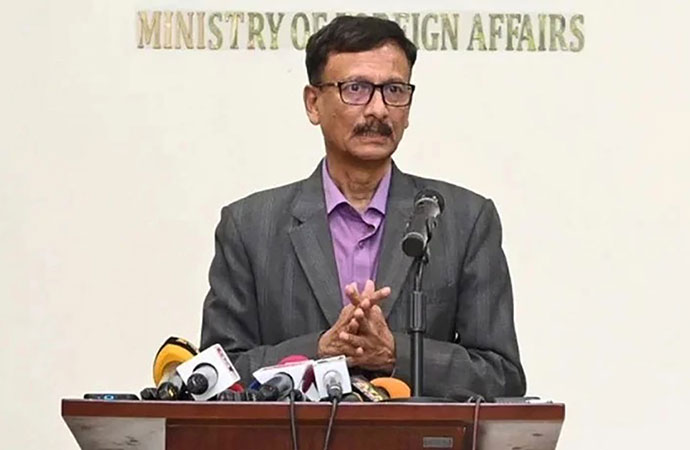Culture

Delving into amorphous forms and imagery
For having a close attachment with seasoned artist Ranjit Das, I visited his house many times to observe his novel and refreshing artworks. At the same time, I eagerly received hospitalities from his wife, Tandra Das, who is also an ardent painter. But, Tandra di is no more and this touching news in a holiday morning (October 11) made me absolutely disheartened and puzzled. She had been suffering from cancer for quite some time.
As a person, Tandra di was reserved, secular, soft-spoken and a caring wife and mother. The couple's sons and daughter have received well education and have tried to establish themselves in their individual fields. Several times I paid visit to their different living locations- Azimpur Colony, Kathalbagan and at last at Rupganj Housing Society in Narayanganj. The living places were engrossed with the artworks of both husband and wife and the places have had a touch of artistry. The last time I went to pay him a visit at his home; I was accompanied by gallerist Goutam Chakrabarty (director of Galleri Kaya) to see Ranjit Da's new paintings for his upcoming exhibition. On that occasion, Tandra Di approached us as the gracious hostess with Luchi and Shabji Bhaji. The meal was really delicious and she proved that she was also a good cook. Every time, I accepted Tandra di's generous hospitality.
Tandra Das is considered as one of the most earnest painters in the Dhaka art circuit. She was a figurative and naturist painter. Her images pulsate with life, touching and stirring any enthusiastic onlooker. As an experimenting painter, she delved into figures, themes, colours and textures. In particular, Tandra emphasised on raw colours and textural intensity. When she intended to portray something, nature, childhood reminiscence, love and affection came to her mind first. She could sense an intense relationship between nature and human life. Her figures hint at many untold stories. But a conscious viewer can easily find a constructive tale in her works. It can easily be comprehended that the painter's works are not meticulously done and a raw background is very much apparent. Consequently, her figures and objects are presented in simple child-like forms. Her thought process was pretty eloquent and had a touch of contemplation.
As a painter Tandra's growth was slow and steady. Since childhood, she had have been moved by rivers, nature and the idyllic rural scenery. Bengali culture, heritage were also featured alongside her many forms of nature with the colours like blue, red, yellow, emerald-green and yellowish-brown. As a good observer of nature, Tandra had a superb control to portray ins and outs of nature. At the same time, the painter contemplated on the common people's beliefs, notions and expressions. She always maintained an individual style which for any present and future art admirer would hold up distinct but different vibrant shades and forms, since they dominated her representations of nature and humanity.
Tandra's brushstrokes and texture are remarkable as well. Her outlines are coarse and have an easy relationship with the colours and textures. Sometimes she creates space to balance composition and placement of objects. Her sweeping brushstrokes reveal her outspokenness and independence. At times her canvases seem unyielding and at times, inflexible. However, most of her paintings show harmony, which also demonstrates the consistent dedication she nurtured for art.

























Leave a Comment
Recent Posts
Remembering Kalidas Karmakar ( ...
The art world remembers Kalidas Karmakar, a visionary whose creativity ...
An Evening with Shishir Bhatta ...
Cosmos Art Echo, the artist talk initiative of Gallery Cosmos and Cosm ...
Myanmar denies genocide, calls Rohingya crackdown co ..
Yes, of course
Earth’s average temperature last year hovered among ..
Bangladesh and Singapore: A Tale of Two Nations